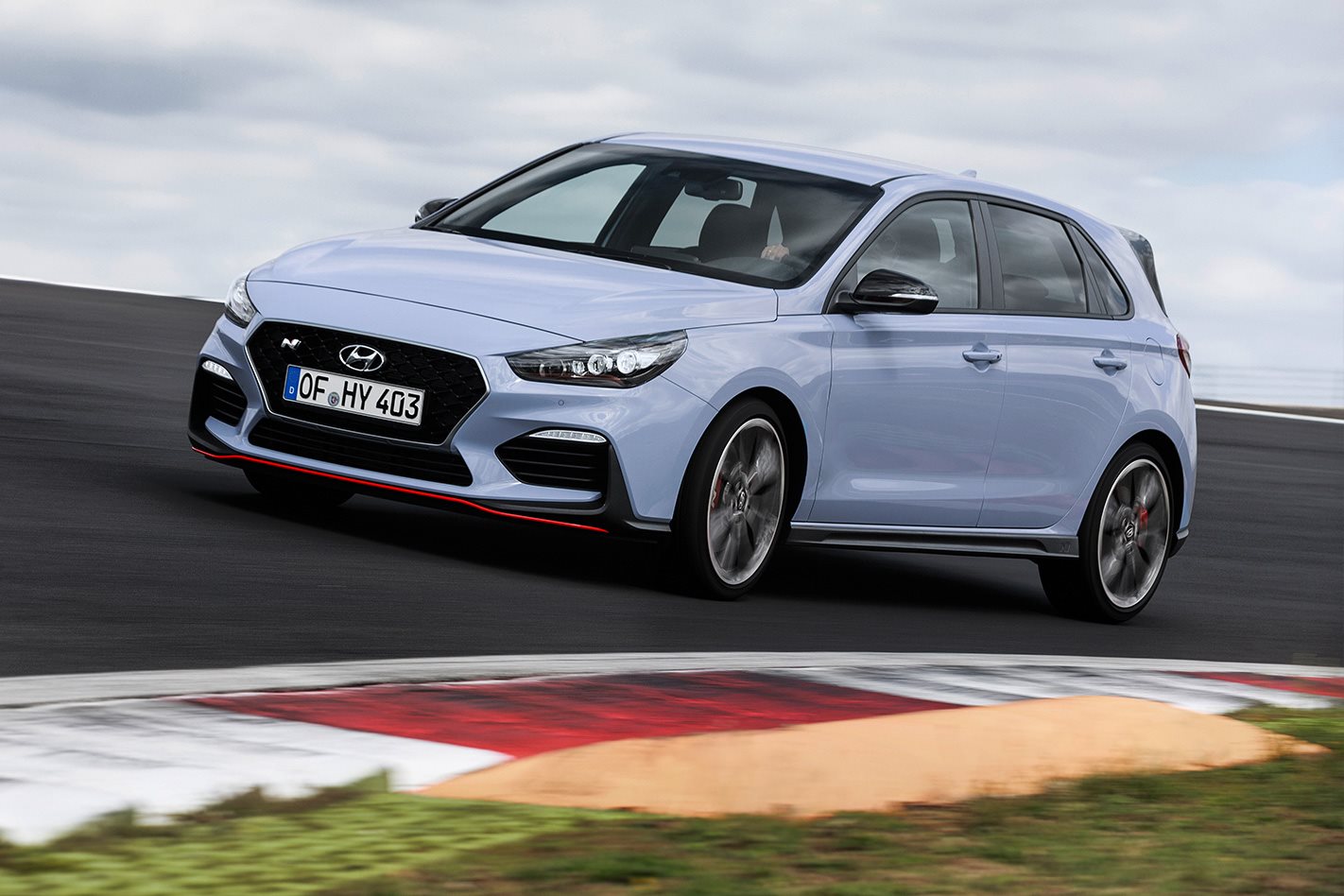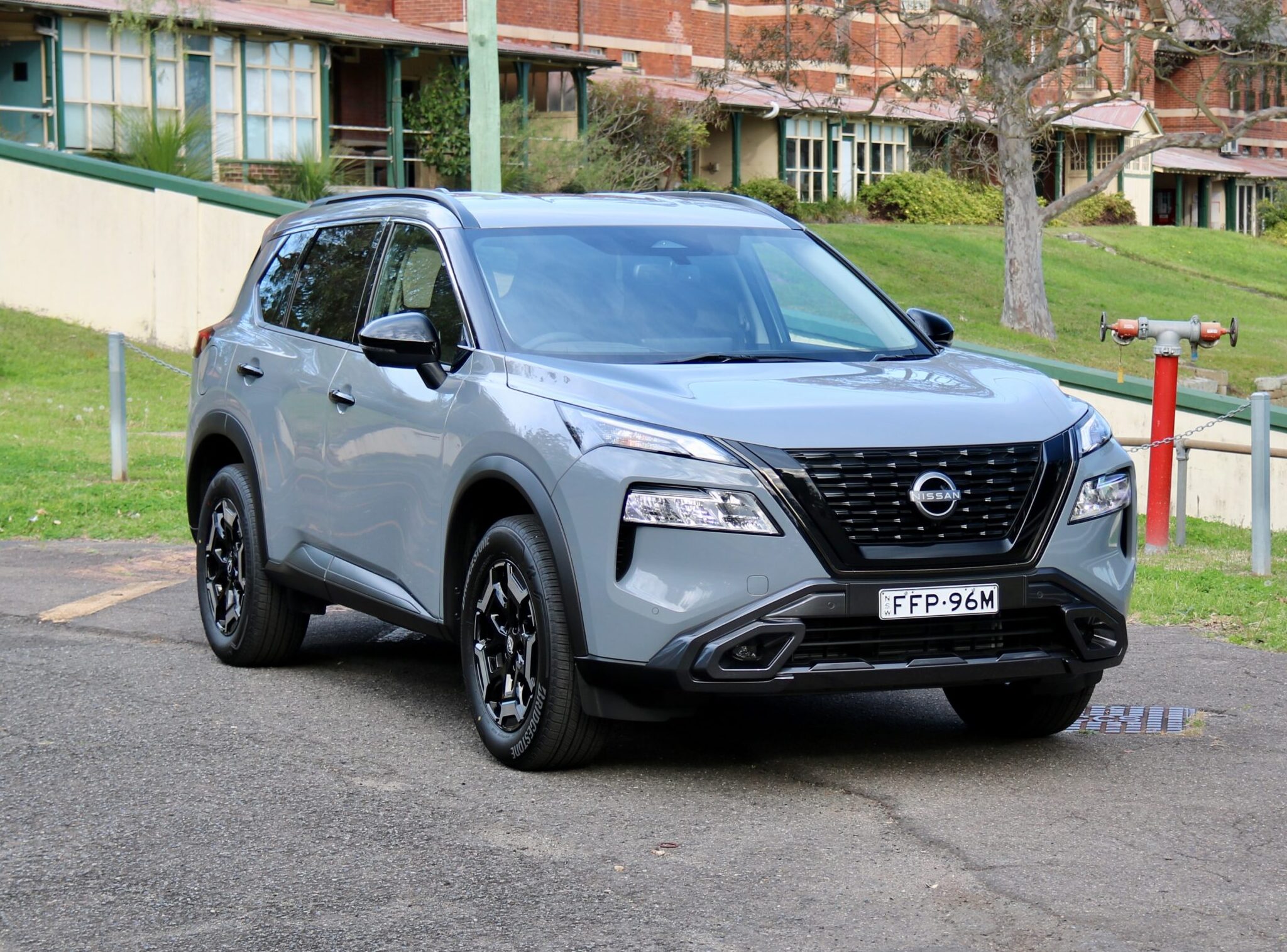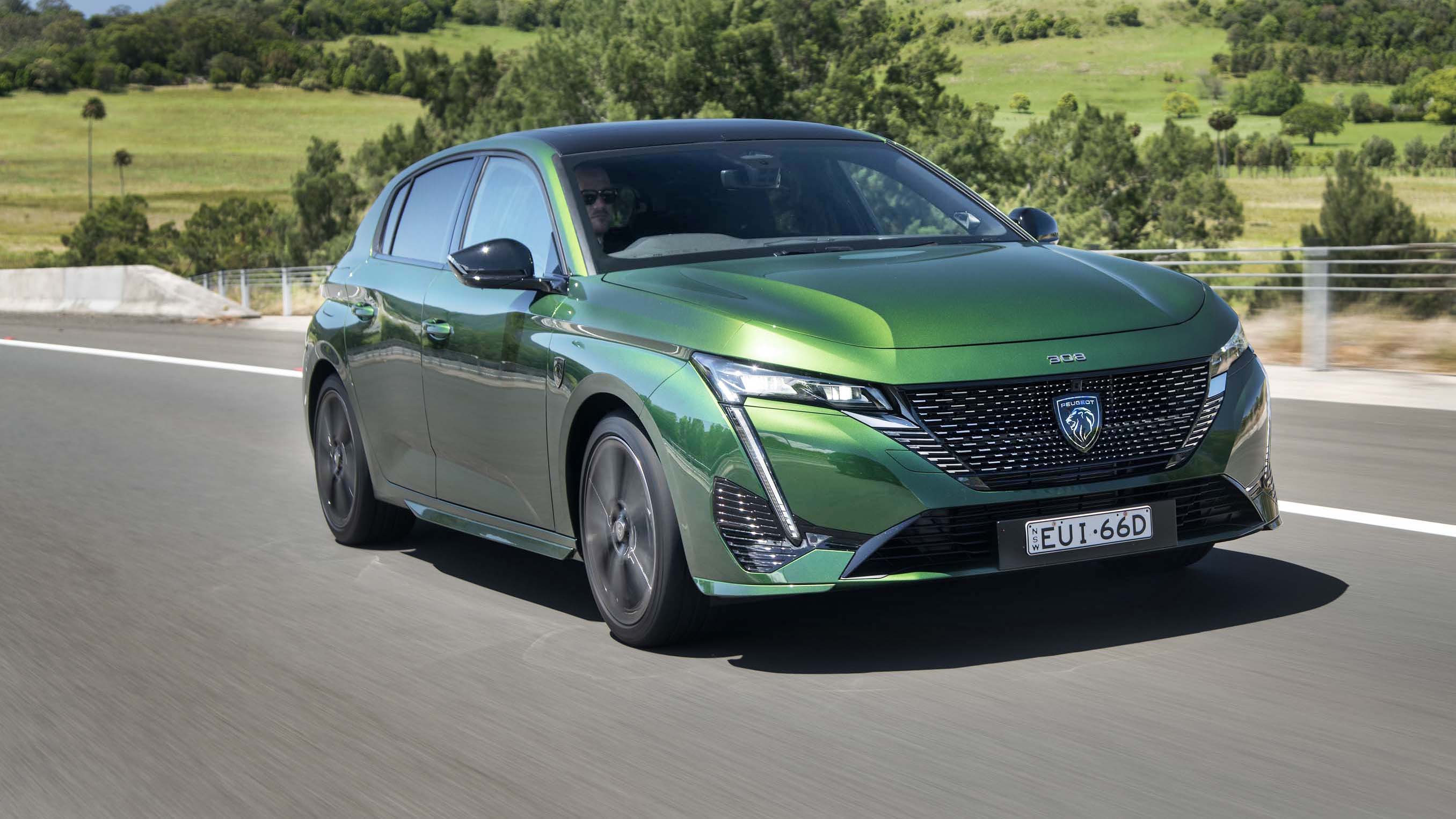HYUNDAI has pitched itself into the hot hatch segment with a significantly hardened version of the i30 hatch that sends up to 202kW through the front wheels.
WHAT IS IT?
The debut car from Hyundai’s high-performance N division, and a rival for hot-hatch stalwart the VW Golf GTI. This is Hyundai showing it demands to be taken seriously as a brand that can deliver thrills for driving enthusiasts, not just sound, functional cars for value enthusiasts.
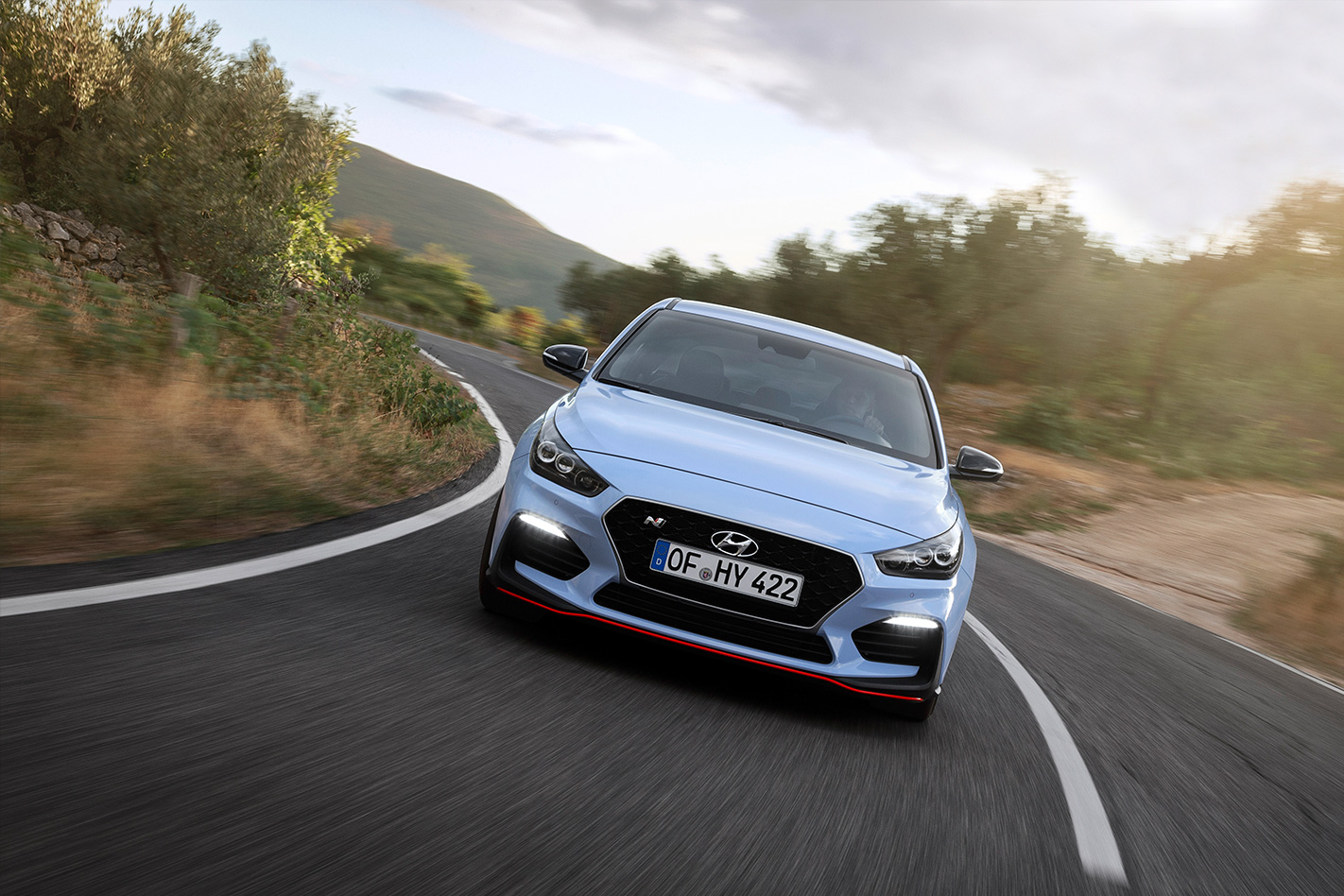
Refer to point one. In terms of a brand perception-shifter, this car is the most important thing Hyundai has done since it launched the Genesis luxury arm. Plus Rome is nice at this time of year, and the Vallelunga circuit on the ancient city’s outskirts, and the roads in the hills above, provided an excellent test of the Hyundai i30 N’s abilities.
MAIN RIVALS
Golf GTI, Honda Civic Type R, Renault Megane RS
THE WHEELS VERDICT
A landmark car for Korea. Hyundai recruited the best in the business when they poached M Division guru Albert Biermann from BMW in the hope he could deliver a transformative car for the company and spearhead a new performance arm. This is the pay-off. The i30 N exudes a sense of engineering depth and sensible usability that almost defies the solid but unremarkable dynamic attributes of the donor car. Plus – crucially – it’s a ball of fun to drive hard.
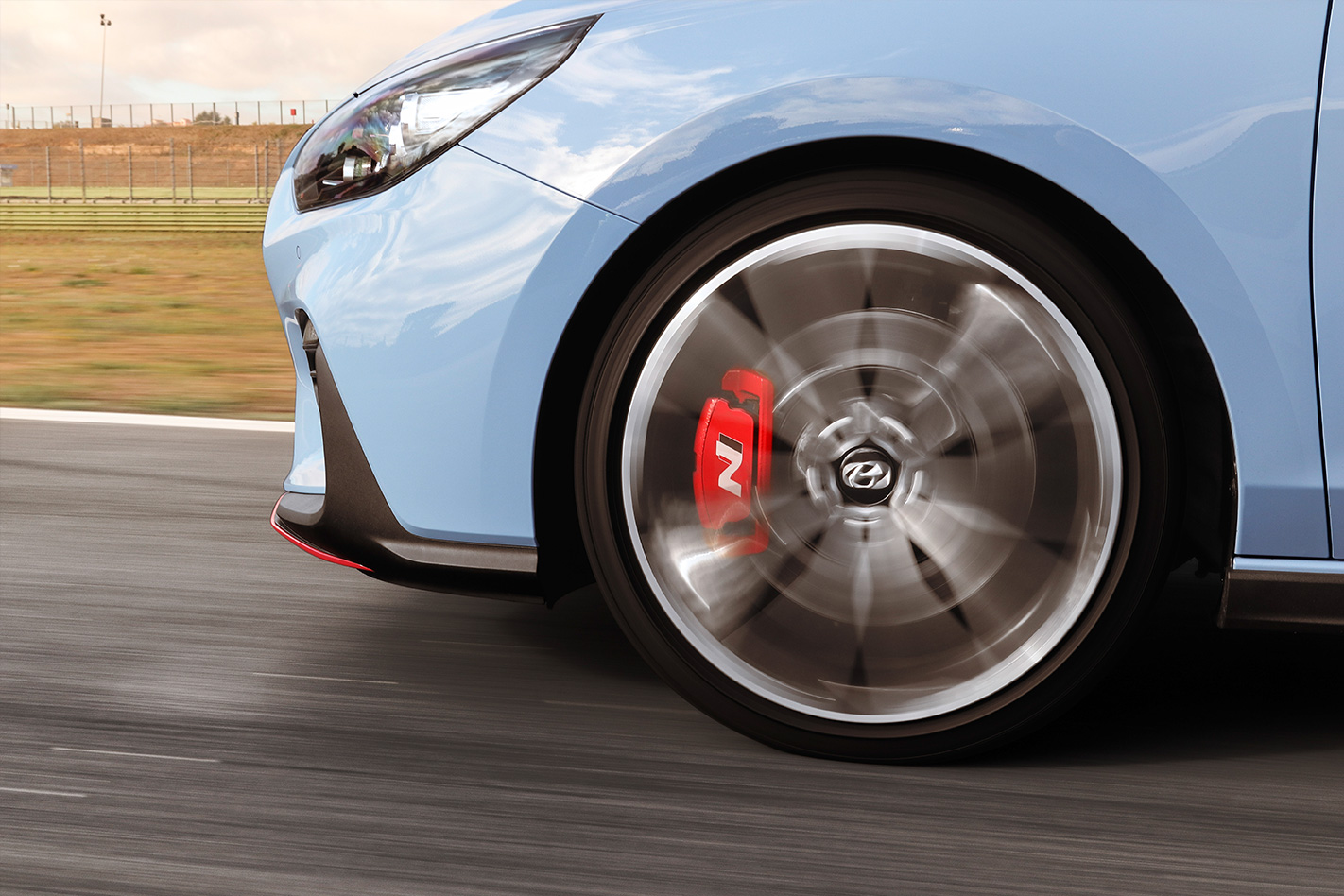
THE WHEELS REVIEW
Okay, let’s not get carried away here. A first drive of Hyundai’s i30 N is not the automotive equivalent of a manned lunar landing (er, if we all agree that actually did happen.) Nor is it like being the first person to light up the rear tyres on a true game-changer like an E30 M3 BMW or an R32 Nissan GT-R, for example.
I doubt my grandkids will stand aghast if I try to regale them in 2037 with a story about Korea’s debut hot hatch from a newly launched high-performance sub-brand.
And yet… this still feels pretty special. As I ease out the sweetly weighted clutch on Hyundai’s first-ever N model, and let the eager, throaty little engine chase its 6000rpm redline, I feel I’m experiencing something of a milestone. But also an odd juxtaposition. In one sense, this feels like a true turning point for Hyundai, and a little slice of automotive history being made. But equally, it feels like a moment the (at times justified) sweeping generalisations of negativity and dismissiveness toward Korean cars gets stuffed down the automotive rubbish chute.
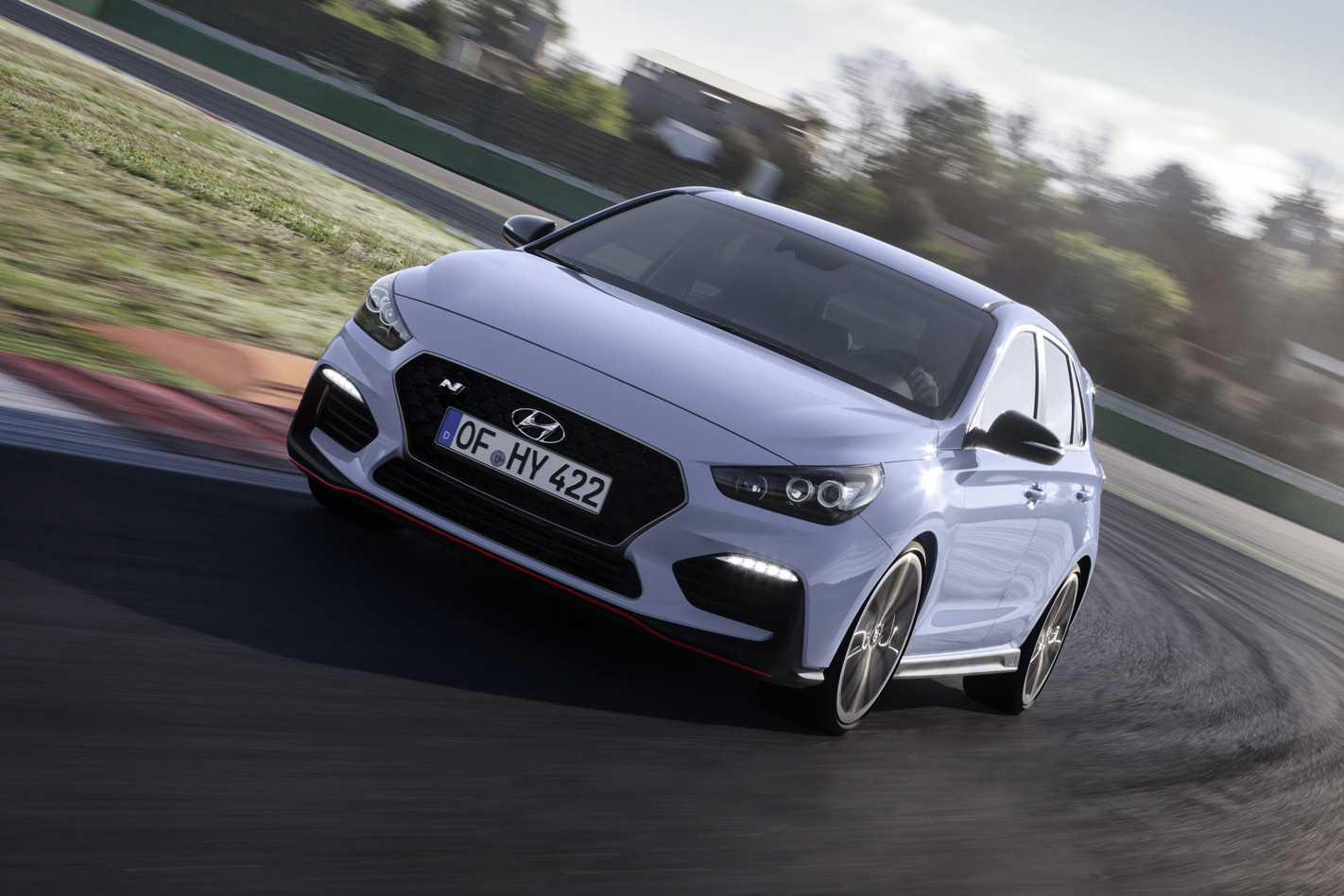
Hear that low, whooshing, sucking sound? That’s not the i30 N’s turbocharger, that’s the open rubbish chute, and there goes at least a chunk of that anti-Korean-car sentiment.
If you’re tight for time, here’s the abridged back-story: in 2015, Hyundai wrote an open cheque and dangled it in front of the best automotive engineer in the business: then BMW’s M Division boss, Albert Biermann. His brief was overarching – make all Hyundais and Kias steer nicely, ride well and handle appropriately for their respective segments. But also establish a high-performance sub-brand with real credibility, develop the cars at the Nurburgring, link the sub-brand to a motorsport program, and start by delivering a credible competitor to the established hot-hatch hierarchy headed by the Golf GTI.
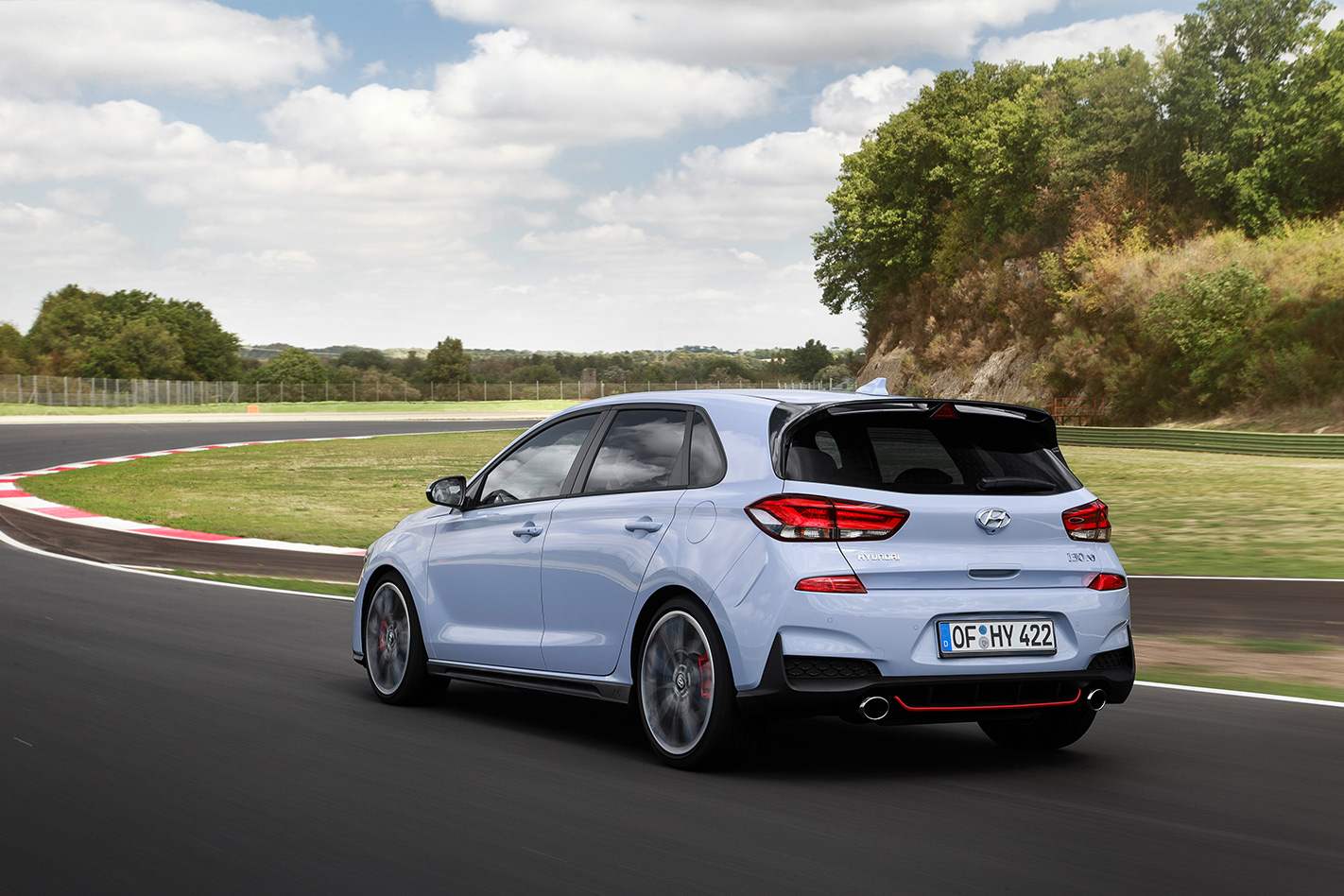
Let’s start with the engine, which benefits from three throttle maps and two exhaust modes. In Sport + it feels zingy, eager and elastic. The peak power figure of 202kW for the Performance Pack car (the standard i30 N has 184kW) is nothing too special compared to what the (more expensive) Civic Type R delivers from the same capacity, but it tops the Golf GTI, and there’s a sense that the kilowatt count has been kept to a sensible level so as to not compromise the linearity of the delivery and daily driving effectiveness.
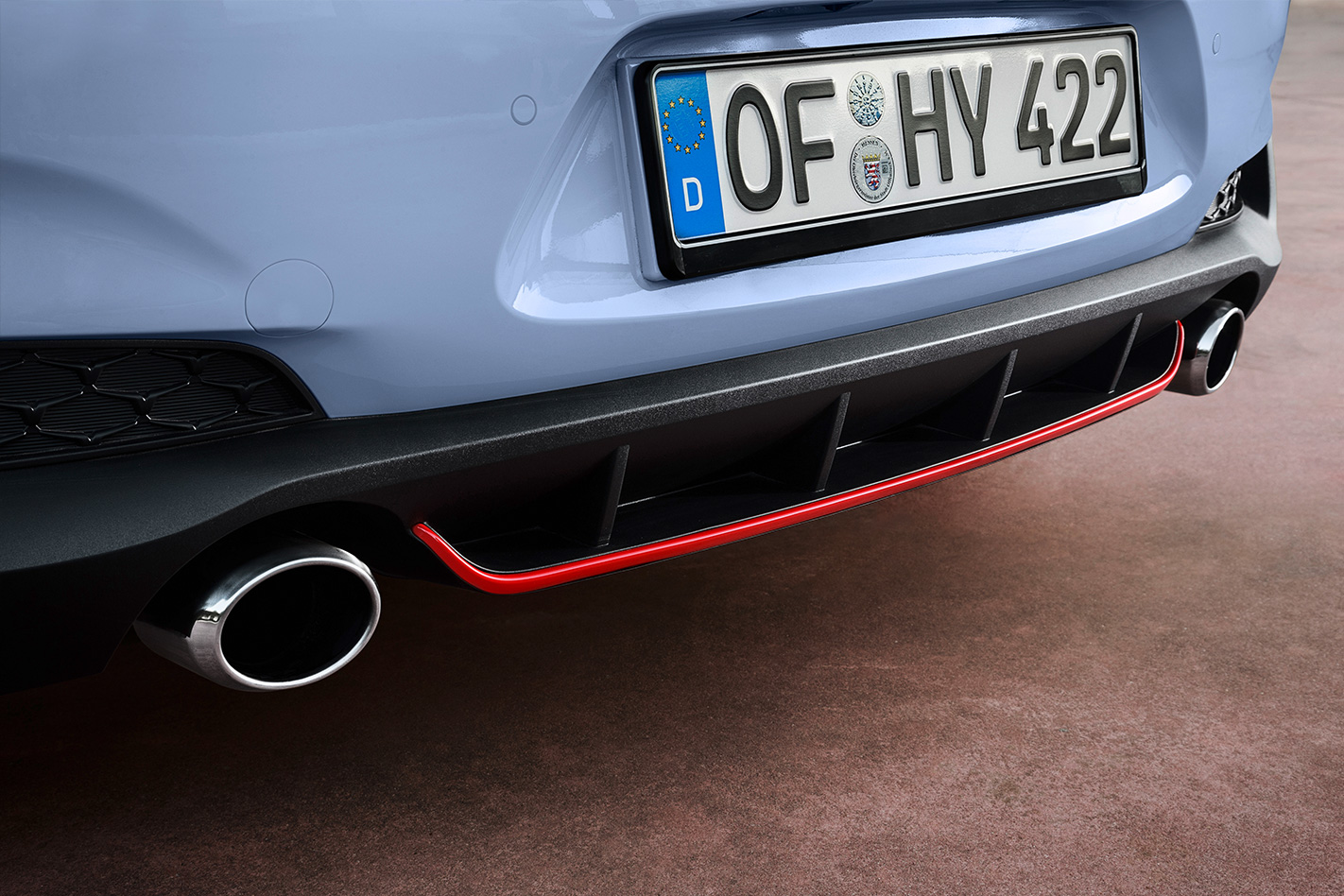
So, the Performance Pack car doesn’t just deliver a more satisfying sonic repertoire and a bit of extra top-end punch over the base model, it also has a clear dynamic advantage thanks to the electronically controlled (but hydraulically actuated) limited slip differential, leaving the regular 184kW model to make do with torque vectoring by brake to control front-end traction under a heavy throttle. Trust us, you want the e-LSD. It makes a big difference to the way the car powers down and exits a turn when driving hard, and also keeps the steering free of a slight layer of torque steer and corruption that can affect the base car when you’re spanking it or the roads are wet.

Our track time on the Vallelunga circuit outside of Rome was a chance to stick the Performance Pack version in its N-mode, which sets all the driver-adjustable parameters – throttle mapping, steering weight, damper stiffness, ESC setting, diff calibration and exhaust – to their most aggressive and performance focused. (And yes, all these can be individually configured into your own custom setting.) First impression are that the steering has real deftness just off centre, allowing you intuitive turn-in, and a confident connection with the tyres in fast, open bends. In the tighter stuff, there is throttle adjustability to a degree, but the set-up feels very neutral – maybe a bit too neutral for keen steerers who like a front-drive car with a really engaged rear end that will swing around a bit on a lifted throttle when the front end runs out of grip. But overall, the car’s stability under brakes, and the way it shares the load between front and rear contact patches in response to your throttle inputs, is all hard to fault. Power-down ability, as touched on earlier, is also properly sorted with the E-diff. The moment you’re post-apex, those front treads can just about always take full beans.

It’s early days to be making a call, but after several laps I was left feeling the i30 N hangs on more manfully in hard driving than a regular Golf GTI does, which can wilt when really punished on a track.
Again, it’s that sense of engineering depth, and Biermann’s stamp extends past what the showroom eye can see. The engine bay, for example, does not house a strut-tower brace. One was tried, but the gains in torsion stiffness were negligible. Instead, there are three lightweight braces connecting the front subframe to the centre of the car that are less costly, more effective, and mean one less thing for your mechanic to remove to access the engine.
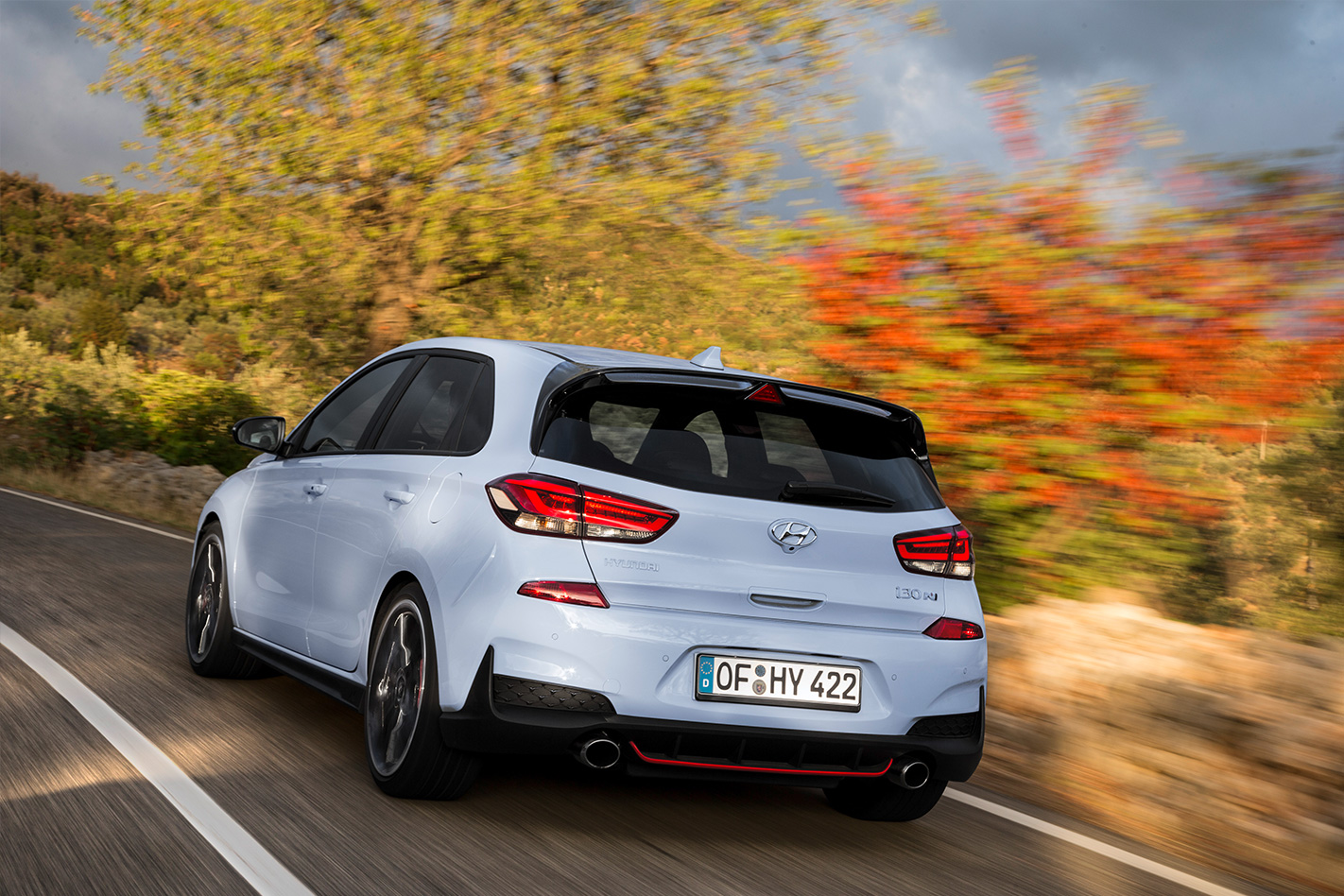
The only slight disappointment with the i30 N comes with the interior. Not its functionality or comfort, both of which are excellent. The seats are well shaped and have extendable under-thigh support, the wheel feels good, the touchscreen works well, and the single button to active N mode is a nice touch. The let-down comes in the fact the cabin doesn’t feel sufficiently different to a regular i30. Final spec of Aussie cars is not yet settled but the cars we drove had too much bland hard plastics and no real visual feel-good factor. It’s like Hyundai spent up on Biermann for the engineering, then let the guy who services the office photocopiers do the interior design. The i30 N needs someone from the Genesis side of the business to lend a hand to add a little aesthetic pizazz via some nicer materials and finishes.

In hindsight, with Hyundai’s commitment to the cause and via the experience we gleaned from our prototype drive earlier this year perhaps the abilities of the i30 N were never really in any doubt. Korean-car haters, the troll-fest is over.
SPECS
Model: Hyundai i30 N Performance Package Engine: 1998cc 4cyl, dohc, 16v turbo Max power: 202kW @ 6000rpm Max torque: 353Nm (378Nm overboost) @ 1450-4700rpm Transmission: 6-speed manual Weight: 1509kg 0-100km/h: 6.1sec (claimed) Economy: 7.1L/100km Price: $44,000 (estimated) On sale: Q1 2018


